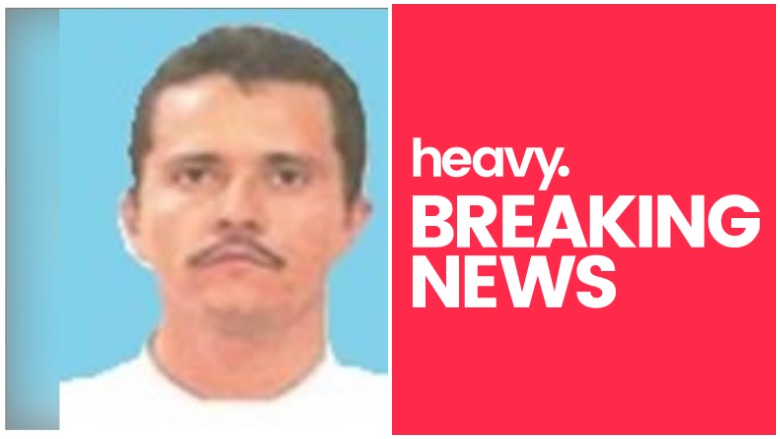
On October 16, US Attorney General Jeff Sessions announced indictments against 15 members of the Cartel Jalisco Nueva Generacion, or CJNG, a Mexican drug cartel. Sessions said that the CJNG has been “taking advantage of our porous southern border” and called on Congress to take action to build a wall along the US-Mexico border.
Here’s what you need to know about the Cartel Jalisco Nueva Generacion, or CJNG:
1. CJNG’s Leader, ‘El Mencho,’ Is Now the World’s Most Wanted Drug Lord
The CJNG is run by Nemesio Oseguera Cervantes, who is usually known by his nickname, “El Mencho.” El Mencho is now the most wanted drug lord in the world; the United States is offering a ten million dollar reward for his capture, and the Mexican authorities are offering 80 million pesos — or about 1.5 million dollars — for his capture. The US Drug Enforcement Administration describes El Mencho as measuring a white male with black hair and brown eyes, measuring 5’7″ and weighing 150 pounds. He was born in 1966 and is thought to be somewhere in Mexico.
But other than those basic facts, few details are known about the world’s most wanted drug lord. A long profile in Rolling Stone Magazine quoted DEA agents who said that El Mencho was little known, even among other people in the field. “Over 25 years of working in Mexico, you’d run into guys who had met Chapo, who would talk about him,” a former DEA agent told Rolling Stone. “But with Mencho, you don’t hear that. He’s kind of a ghost.”
What El Mencho is known for is his brutality. Under his leadership, the CJNG has carried out well-publicized rapes of children, public executions, and mass killings. The DEA agent who spoke to Rolling Stone compared the CJNG to a terrorist group, saying, “This is ISIS stuff. The manner in which they kill people, the sheer numbers – it’s unparalleled even in Mexico.”
2. CJNG Is Considered the Most Powerful Criminal Gang in Mexico
By 2015, the CJNG was considered to be the most powerful criminal group in the country. The CJNG is primarily a drug cartel and defends its territory fiercely. It goes after both small-scale and large-scale competition — from teenagers selling marijuana to each other in its territory to government forces that seek to contain it. On May 1, 2015, CJNG brought down a military helicopter using rocket launchers — the kind of action usually reserved for terrorist groups fighting an enemy power, or for one country at war with another. But around the same time period, the cartel seized and murdered two teenage boys who were selling drugs in Guadalajara without the group’s permission; the boys were seized in front of their neighbors and the bodies were dumped in a ditch.
3. CJNG’s Reach Extends into the US, Africa, Europe, and Asia
The US Drug Enforcement Agency says that the CJNG, which is based in Jalisco, has a sphere of influence that extends well beyond Mexico. The DEA said that the cartel had been developing “criminal alliances with criminal organizations all around the world, including in the United States, Latin America, Africa, Europe and Asia,” as far back as 2015. The cartel has a base of operations near Tijuana, along the south-west border with the United States; they also have a base in Vancouver, near the US’s northwest border. The group also controls areas in the Pacific and the Atlantic Oceans.
Reports from US security agencies say that the CJNG distributes cocaine and methamphetamine up and down the Pacific coast, from the tip of South America up to the borders of the United States and Canada.
4. CJNG Is Known for its Acts of Brutality and Torture
In April, authorities in Jalisco said that the CJNG was behind the torture and death of three film students who had disappeared in the state earlier that year. According to Jalisco authorities, the cartel sent armed men to kidnap Javier Salomón Aceves Gastélum, Marcos Francisco García Ávalos and Jesús Daniel Díaz García back in March. The cartel apparently believed that the three film students were members of a rival gang. But the three kidnapped men seem to have had nothing to do with any drug gang; they were kidnapped because they were visiting the home of one of their aunts. The CJNG was watching that home in search of one of their rivals, a man known as El Cholo.
The gang members beat and interrogated the three film students before killing them. Then, they dissolved their bodies in acid.
The cartel has also been linked to the disappearance of three Italian tourists in January. Raffaele Risso, 60, his son Antonio, 25, and his nephew, Vincenzo Camino, 29 were visiting Jalisco this winter but disappeared on January 31. Members of the CJNG have been arrested in connection with the crime.
5. The CJNG First Emerged in 2010
In 2010 Ignacio Coronel, the leader of the Sinaloa Cartel, was killed by Mexican security forces. This created a power vacuum and an internal split within the Milenio Cartel, a group which had also been commanded by Coronel. El Milenio broke apart into two new groups, the “Torcidos,” or twisted ones, and the Resistencia, or “resistence.”
The Torcidos eventually evolved into the group known today at the Cartel Jalisco Nueva Generacion, or, in English, the Jalisco New Generation Cartel.




